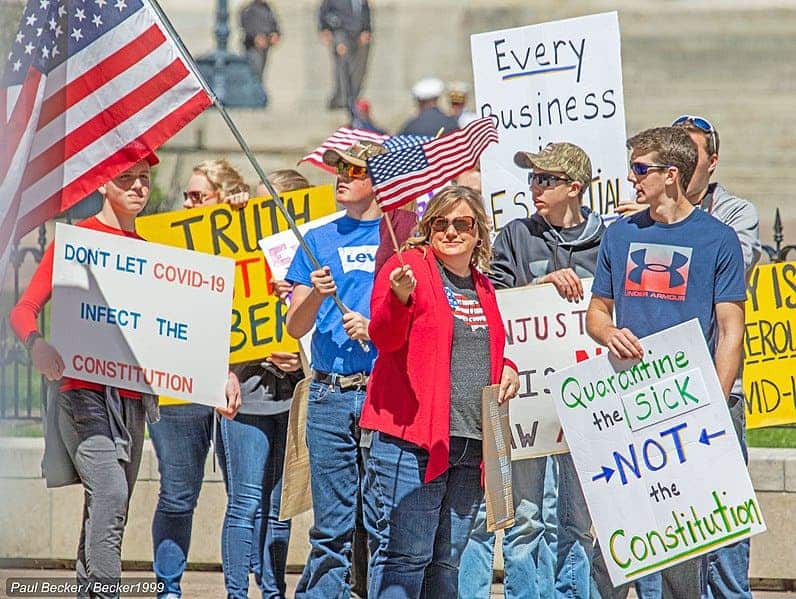Most Americans are practicing social distancing, and it really shows. According to a new study, all their hard work is helping to bring the spread of COVID-19 under control.

The US has over 1.5 million confirmed COVID-19 cases, by far the largest number of cases in the world — over 5 times more than any other country at the time of writing this. Yet social distancing measures and lockdowns, which have been shown to reduce disease spread, were met with unprecedented resistance here. From protest rallies in multiple states to armed protestors storming a statehouse and controversial legal battles, the US is far from accepting of public health indications.
It’s important to note that despite this resistance, most Americans are still practising social distancing. But the new study wanted to analyze how effective social distancing is not when practised voluntarily by citizens but when introduced by American authorities.
“At issue is not whether isolation works to limit the spread of disease, but rather whether the particular government restrictions designed to encourage social distancing in the US reduced spread relative to simply providing information and recommendations,” the study reads.
Social distancing policies adopted by US states and localities come in a variety of forms, from stricter shelter-in-place orders or closures of non-essential businesses to lighter measures such as banning large social gatherings. But all these policies rely on the cooperation of the public.
For example, although California’s first-in-the-nation stay-at-home order carries threats of fines and incarceration, its effectiveness fundamentally relies on social pressure. But studies have shown that compliance with social distancing orders in the US appears to be related to local income, partisanship, and political beliefs, so compliance and social pressure can vary greatly across the country — both in support and in opposition to distancing measures.
According to the new study, wherever government-enforced social distancing measures were introduced, they greatly reduced the contagion. The most impactful were stay-at-home orders and the closure of non-essential businesses (bars, restaurants, gyms, etc). Meanwhile, school closures were found to be far less effective (within the study’s margin of error).
Overall, the study offers empirical confirmation to support the deployment of official lockdown measures, and not rely solely on individuals action.
The coronavirus situation in the US is horrible as it is — but it would have been much worse? Up to 35 times worse, the researchers conclude.
“Holding the amount of voluntary social distancing constant, these results imply 10 times greater spread by April 27 without [shelter in place orders] (10 million cases) and more than 35 times greater spread without any measures (35 million),” the authors write.
The study has been published in Health Affairs.


